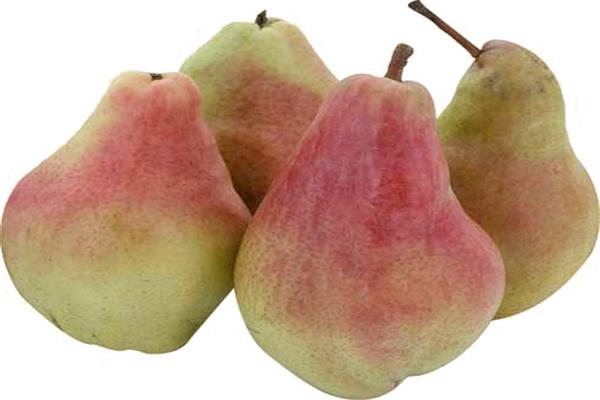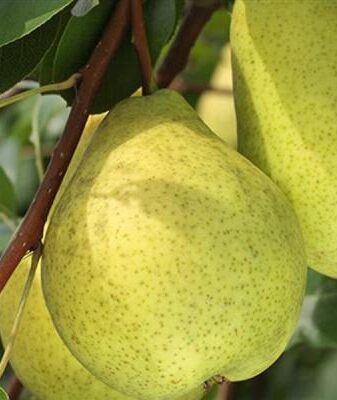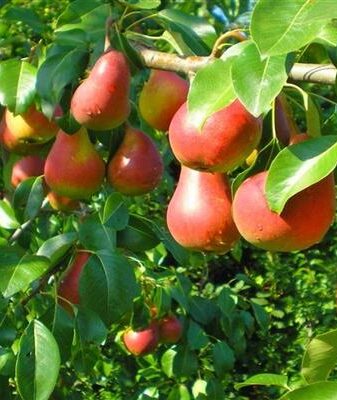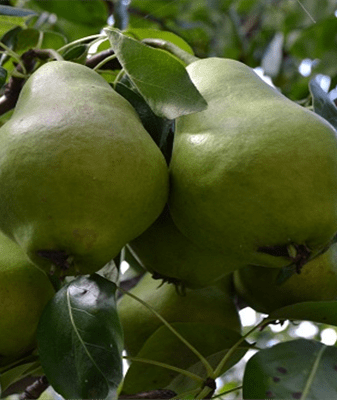Pear Alexandrine
Content:
Pear Alexandrine has been known since one thousand eight hundred and forty-nine by Dullar, her homeland is France, the city of Nantes. Then the culture was transported to the territory of Krasnodar, in one thousand nine hundred and eighty-seventh to the territory of the Kuban and Predgornoye, the Alexandrin pear variety was also planted in the south of Ukraine, and the variety began to be grown in world quantities in France.
Pear Alexandrin: description of the variety and characteristics

Pear Alexandrin: photo of the variety
The Alexandrin pear tree is small in size, the crown is small, scattered trapezoid shape. Shoots in the form of bends, cranked.
The size of the fruit is small, sometimes large. Reaches from one hundred and eighty grams to three hundred grams by weight. Pear, lumpy surface. The skin is initially glossy, fragile, olive in color, when the fruit ripens, a greasy bloom appears on it, turns into a yellow color, small specks and dots of brown color appear, fruits that constantly grew in the sun have a red speck.
The leg of the Alexandrine pear is large, it can stand straight or slightly curved. Brown color. The funnel is small, ribbed along the edges. The contents inside are creamy, sweet with a sour taste, with a pleasant smell, delicious. The composition of the fruit includes: Soluble solids from twenty percent, sugar from twelve percent, acids from six milligrams per hundred grams, catechin from sixty-five milligrams per hundred grams.
Features of the variety
The Alexandrin pear variety is harvested when they ripen, hold after harvesting until twenty-one days, if the fruit is overripe, then the pulp swells. In cellars or in refrigerators, fruits can lie for three or four months. In a comfortable room, fruits can lie for a large number of days, the presentation will not deteriorate. Only the harvested crop is transported for sale. It is necessary to grow a crop on a site without drafts, therefore, when ripe, the fruits can fall from the trees, and because of this, the yield will decrease. Fruits appear on trees five or six years after planting. If grown on quince, then the fruits can appear in four years, and after ten or twelve years from a tree, you can collect fruits about thirty-five to fifty kilograms from one tree. the harvest is high and abundant.
The cold season calmly endures the year, the inflorescences practically do not feel cold. They carry scab from three to four points, more infecting the culture with entomosporism, from two to three points.
Pear Alexandrine: advantages and disadvantages
Advantages Alexandrin pear varieties: grows well with quince, quite good fruits are grown.
Minuses Alexandrine pears: the culture is close to and does not tolerate diseases, for example, a fungus. Fruits lie for a small amount of time.
The Alexandrin pear variety was tested in the manufacture of a hybrid at SKZNISiV Leven.




